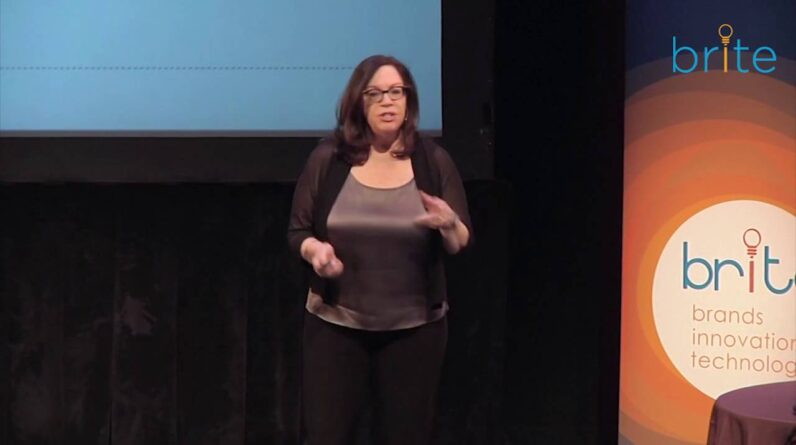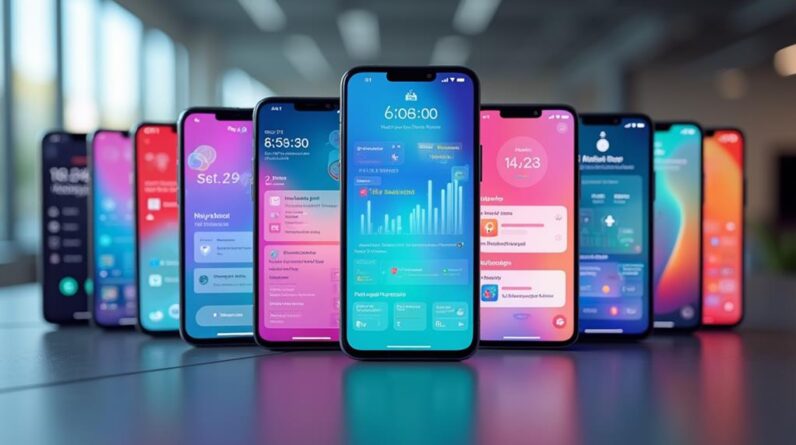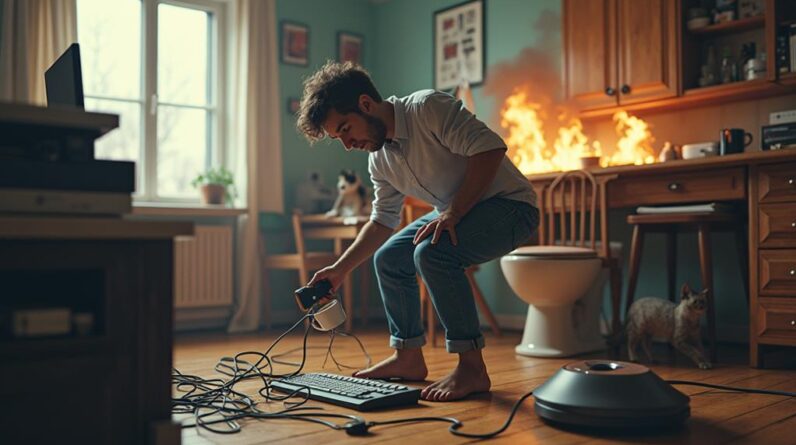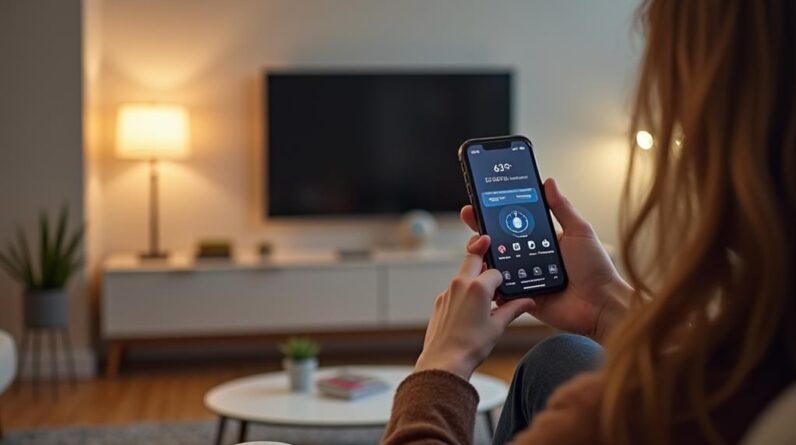
the fundamental unit of analysis when we want to think about consumer experience in the smart home is not to think about the individual devices but instead to think about the interactions among those devices the first stage of the internet I like to think of as the Internet of information and that was internet phase one and that was really the web and in terms of the research focus and even the marketing focus it tended to be on online consumer experience and if we think about what the catch phrase might have been it's this famous New Yorker cartoon by Peter Steiner from the early 90s which says on the internet nobody knows you're a dog then fast forward and now by 2013 we're pretty squarely into the social media phase of the internet that's internet phase 2 and that's the Internet of people as I like to think about it a lot of research on social media still going on and the catch phrase there is on the internet everybody knows you're a dog and now just a few years later we are now entering what I will argue is the third phase of the internet and it's a really exciting phase it's the Internet of Things and I like to think of this as the post social phase of the Internet where now we're thinking about consumer experiences of what I'll call the assemblage this is an Internet where devices are interaction with devices become much more important than our interactions with people and the catch phrase here is on the Internet of Things nobody knows you're a fridge okay so a little bit of humor there but sort of set the stage for how I see things evolving so just to make sure we're sort of on the same page here what is the consumer Internet of Things it's this collection of everyday objects in the physical world that are embedded with sensors and with actuators and of course are connected to the Internet and they're connected to the cloud and the thing that's really important about this is these devices communicate directly with other devices so not only are they communicating with consumers but in some of the ways I'm going to argue a little in a few minutes some of these communications with the devices are more important than our communications with them okay so if we think about you know well is this really a big deal I'm here to tell you I think the Internet of Things is going to be more revolutionary in terms of our lives and behavior than the Internet itself was and if we just look at some of the early numbers you can see the Internet of is going to be huge Samsung made an announcement that they are going to be 100% Internet of Things enabled every single product that they sell in just a few more years will be connected to the Internet various estimates are between 25 and 50 billion connected devices in just four more years there will be about a quarter of a billion connected cars on the road in the next four to five years there's been a lot of investment and it's worth you know very big numbers 19 trillion perhaps in just another five years or so so I don't think there's any argument that this is a massive opportunity not just from a marketing perspective but from a broader business perspective but one of the things that's really been interesting on us as the current instantiation of the consumer Internet of Things is the smart home and if you start to look at the smart home you see there's a lot of hype but there's not a lot of action and in fact there's an enormous adoption problem and so I put some statistics up here as you can see you know not that many people own a connected device and actually by show of hands how many people here in this room have at least one device okay so you kind of prove my point your upscale your tech EDI wires you're over educated but for the most case in the mass market we don't see that and in fact a really kind of frightening study came out recently by Accenture which suggested that the 2016 purchase intention rates for five different cat for six different categories of some of the most popular connected devices so smartwatches you know smart home cameras personal drones things of that nature I know I'm dying to get one the purchase intent rates are really low but even beyond that the purchase the interest in purchasing one of those devices hasn't really changed in the last year so something's going on there are very low rates of adoption on the one hand you have Samsung saying we're going to have Internet enabled devices and every single product we sell but consumers are saying so we have a pretty significant situation here so what are the barriers I think there are three main one of them is awareness now just last year 80% of consumers suggested they didn't even know what the unearthing and then Internet of Things was or if they did know they weren't really sure what it was I'm not too worried about the awareness problem I'm a marketer but you know it's picking up in the mainstream media there's a lot of discussion about it so I think that's going to catch up but then we have two more significant problems the second one has to do with price and security privacy a loss of control consumers are kind of freaked out about what it might mean to bring these devices into the home there they're very expensive there's some legitimate concerns about privacy and security and there's also sort of the sense of loss of control you know remember when the Hal 9000 said I'm sorry Dave I'm afraid I can't do that and so there's this kind of sense that are these devices going to take over and we're not going to be able to control them but I think the third problem is the most important problem and that's the problem of product value in performance many consumers just feel the value proposition is missing from these smart homes smart autonomous devices consumers don't really see the need for a smart home and plus device use is pretty challenging how do you install them how do you get them to work together they don't really work I don't want to keep resetting the router they don't work as advertised so there's a lot of issues there so one of the things we've been interested in studying in our Center is how to crack this value code and we'll argue that for smart home adoption to expand beyond sort of these niches of upscale consumers and these tech EDI wires we have to understand the value that the smart home offers to consumers and one of the problems right now is that the current focus is on the individual products the thermostats the light bulbs the refrigerators the cameras and the specific use cases so for example turn on the lights when I get home or turn you know when it's dusk set the lights to blue and when it's midnight turn off the lights that sort of thing but I'm going to argue today that the value is among the interaction among the devices not among the individual devices themselves and so we think that the smart home value actually embedded in what the smart-home identity means to consumers and what kind of experiences emerge with their interaction with those devices and if you buy that then we need a new framework for how to think about these things and so let me take a few minutes to talk about that one of the things we've noticed and a lot of the work we do with companies suggests that at the beginning consumers get one device they get another device into the home and then something really interesting starts to happen pretty soon they want the devices to talk to each other they want the devices to connect they want some sort of interaction and they want something more to happen than just what the individual devices can do themselves and so what happens is the interaction among the devices becomes much more important than the single devices and from that consumer experience has the potential to emerge and so when you think about what kind of framework would be useful to help us understand what can emerge from all of these interactions we're drawing a lot of our framework for something called assemblage Theory I'm not gonna I'm gonna spend like a minute talking about it but it's a really interesting theory from the neo-realist school of philosophy and it basically helps us understand how all the interactions among entities can create a whole that is more than the sum of the parts and let's take a look at some one of the key ideas from this theory the idea we're arguing is that the fundamental unit of analysis when we want to think about consumer experience in the smart home is not to think about the individual devices but instead to think about the interactions among those devices and we consider those in the context of what we call paired capacities and so for example you can see here in this figure there's a consumer might be interacting with the device so if a consumer triggers a beacon when they enter a room then maybe the Philips hue turns on the light or similarly if a motion sensor detects activity then my security camera starts recording so the big idea here is these in these interactions always happen together in this paired capacity where the capacity of one device has the capacity and has the capacity to affect and other device has the capacity to be affected and this simple concept turns out to be really important when we want us to understand interaction and the other thing I want to point out here is you have all these individual interaction events and then you have this event stream over time and these interactions together from this what can emerge are different kinds of experiences so let's take one example of some of these interactions now some of these interactions so for example in that slide I just showed you they define what the marketing experts would call use cases so for example when the garage door opens the closes in my house then turn the kitchen lights red for that moment so kind of a red alert kind of use case and that can lead to the use case that the industry would call safety and security and use cases in fact dominate current smart home marketing white IBM five now six years ago introduced a white paper suggesting there would only be several use cases that would help define the industry and then five years later Lowe's Iris's marketing still on the basis of those use cases smart things are still marketing on the basis of those use cases and in fact many and marketers in the industry are saying what will be that secret sauce combination of use cases that will get consumers to adopt but we think that's the wrong question instead we've if you think about it use cases don't explain what can emerge so you have all of this multitude of interactions constantly happening in a dynamic and heterogeneous way inside the home and something really interesting emerges from that in just this example all these different things happening in the background one experience could emerge hey my house really cares about me it's really taking care of me and so these experiences we think become really important in thinking about smart home marketing and so just sort of a quick summary of our framework we're gonna argue that the smart home represents these interactions involving these exchange of these paired capacities the capacity of one component to effect is always compared with the capacity of another component to be affected and the smart home experience will emerge from all these pair capacities that are exercised in all of these ongoing interactions that are occurring in the smart home and so it's this experience that turns out to be really important not the individual devices themselves and just to give you an example of what I'm talking about and why we think this is really important both the home and the consumer can develop these emerging capacities and from these emerging capacities experience can emerge so for example the home has the capacity to track the behavior it's of occupants say for example with a smart camera then the home has the capacity to use smart behavior to suggest how things can change so for example maybe the home recognizes you're using too much energy and it might make a suggestion to turn the thermostat down and then from this what can emerge is the capacity of the home to actually be smart so rather than marketing the home is smart the home actually could develop the capacity to be smart through all of these interactions at the same time consumers have capacities so the consumer could develop the capacity to feel this sort of tangible sense of presence in the home from all of these ongoing background interactions some background some explicit the consumer might have the capacity to feel the home is alive to them and then I think this one's really interesting the consumer might have the capacity to feel the home is with them even when they're away and if any of you have second homes and have installed cameras and other devices in those homes which you keep watch on through your smartphone you know exactly what I'm talking about because it's actually a sense of I'm there even when I'm not there that's an emergent capacity and we think those kinds of experiences are gonna be really important ok so I've got about five minutes left to share seven important insights derive from my framework so let me get to those okay the first recommendation we have for marketers is to market from the bottom up interactions not just the top down what this means is we want to rather than telling consumers what they should do in the smart home we want consumers to enter create their own bottom-up interactions and so from this these different opportunities and experiences will emerge in fact saying that the smart home has five use cases is like saying the Internet has five uses and so we want to be really careful about making sure we're not doing this sort of only this top-down marketing number two when we market the smart home we want to think back to Steve Jobs when Steve Jobs first introduced and marketed the iPad he didn't market it on the basis of use cases instead he said this is everything you already understand but more he suggested it was magical he suggested it was revolutionary and if you remember when the iPad came out a stamp six years ago there was a lot of you know then the name was mocked people were really confused what is it a giant iPhone and it was very not clear how to categorize it and the smart home is like that early iPad at this point we're really not sure what to do with it we're really not sure what these interactions are gonna produce but we need the opportunity to think a bit front from those bottom-up interactions number three marketers need to focus and encourage on habitual repetition so this is repeating the same sort of interactions over and over again when my wash is done send me a text when I run out of Tide hit the Amazon – button when it's dust turn on the lights when it's midnight turn them off through these in habitual interactions consumers get into the habit of learning these interactions in the home so we need to get these devices into the home as quickly as possible and then we need to encourage these ongoing habits of use now one of the things that's really going to be important is we want to focus on the ambient interactions now remember I said at the beginning here that what I thought was going to be really important we're going to be these device to device interactions and that they might even be more important than the interactions that we as consumers have with our devices and one of the reasons for this is because these ambient interactions these interactions going on in the background on a regular basis that we aren't even involved in because they're autonomous those are the kind of interactions that help build trust and then we can start to feel that the house can be reliable can reliably do what we've programmed it to do and that's going to be really important as we start to think about marketing this going forward so the consumers can generate these feelings of trust now it might seem a little bit contradictory but at the same time that we're trying to encourage this habitual repetition to generate these consistent sets of interactions we also knew need to do a little bit of shaking up don't have time to talk about this whole framework we've developed here but the basic idea of what I've been talking about here is these are these habitual interactions and routine use we want to stimulate but consumers have a natural tendency to get bored particularly as these simple devices we sort of begin to master them and figure out how to use them and so at the same time marketers have to destabilise to keep consumers interested as the environment gets more complex and that can be done through notifications and add-ons and software updates and new products and things of that nature to keep that market developing my sixth recommendation insight derive from our analysis is that marketers need to pay attention to emergent individual Smart Home identities and in other words what's happening in these individual homes as consumers are interacting with all of these different devices and the reason they need to do this is because what's happening in any one individual home isn't going to be that important because from our theory it's very clear that homes interactions and homes are going to sort of tend and clump toward interesting patterns and it's those patterns we need to be aware of so that we can see what the themes are in use now the marketers out there will recognize those clumps and patterns those are emergent market segments and though I won't have time to talk about it today there's a lot of interesting analytic work we're also doing looking at these event streams to deduce what those patterns actually look like in the millions of interactions that we have from this kind of IOT event stream data my final recommendation maybe a little controversial I believe that there's going to be a something more that emerges that's going to trump privacy and if we think about that we it's possible that there will be something we'll have in the home that will make consumers feel that the benefits are so great it's worth trading off their privacy for and if we start to think what that might be I think personalization is going to play a very large role in that as these devices and these interactions gain more information about who we are from our using them and they use that information to influence subsequent behaviors we can imagine a situation where I'll say hey this is pretty great and in fact early evidence from the marketing trenches suggests consumers really liked this personalization because they recognize the benefits of the smart home being able to meet its needs let me just give you two examples to suggest how this would work imagine a home that does a neighborhood of homes that decides to be networked so they put the kids on tags they put the pets on tags and then it's possible with networking in the homes as well for everybody to keep track of where their kids are how late they're staying at the park hey it's Johnny it's time to come home for dinner we're a spot and that sort of thing and when you think about whether consumers would be giving be willing to give up what is actually an enormous amount of privacy in exchange for the benefits of that networking we think they will another example from connected cars will consumers be willing to give up information about their location sharing it with other cars information about their speed their travels and so on in exchange say for reduced insurance premiums you bet they will and so when we think about these opportunities it's going to be very important for us to pay attention to what kind of experiences emerge and where consumers see those benefits and with that I'll wrap up the challenge for marketers sort of the takeaways here the smart home is going to be much more than the sum of its parts it's not just the individual individual devices it's actually I think going to be more fruitful to think about it as a set of complex interactions between people and between these newly smart autonomous objects which will interact in ways that I predict will be revolutionary for consumer behavior and for marketing and so we want to emphasize the assembiy from which all these experiences emerge not these individual devices and so the most important job we have right now is to get these devices into as many homes as possible as quickly as possible because what we need to focus on are the interactions and what will emerge and from that we will have the tools and the strategies available to help develop expanded patterns of use and deeper adoption thank you very much

As an Amazon Associate I earn from qualifying purchases.







